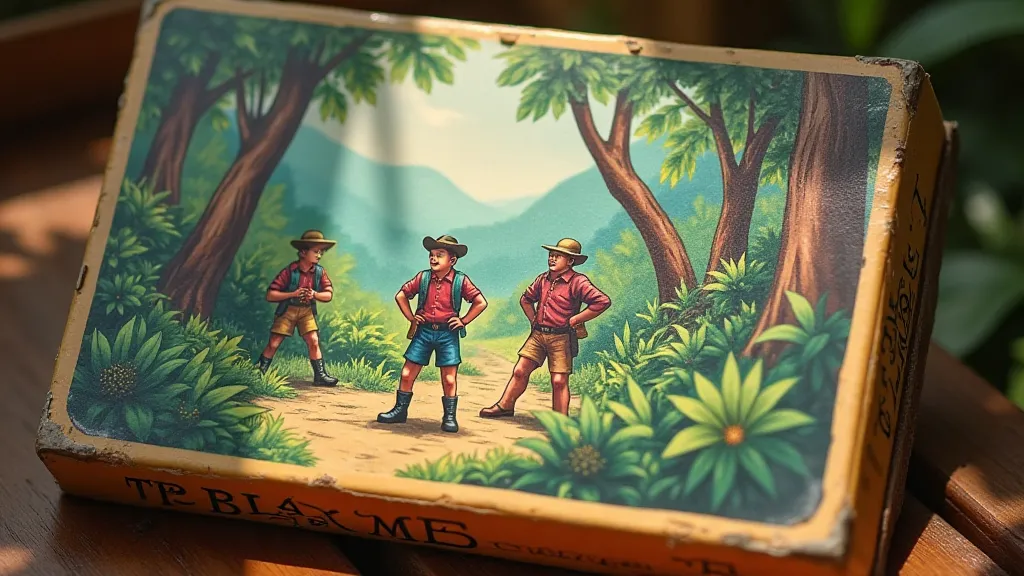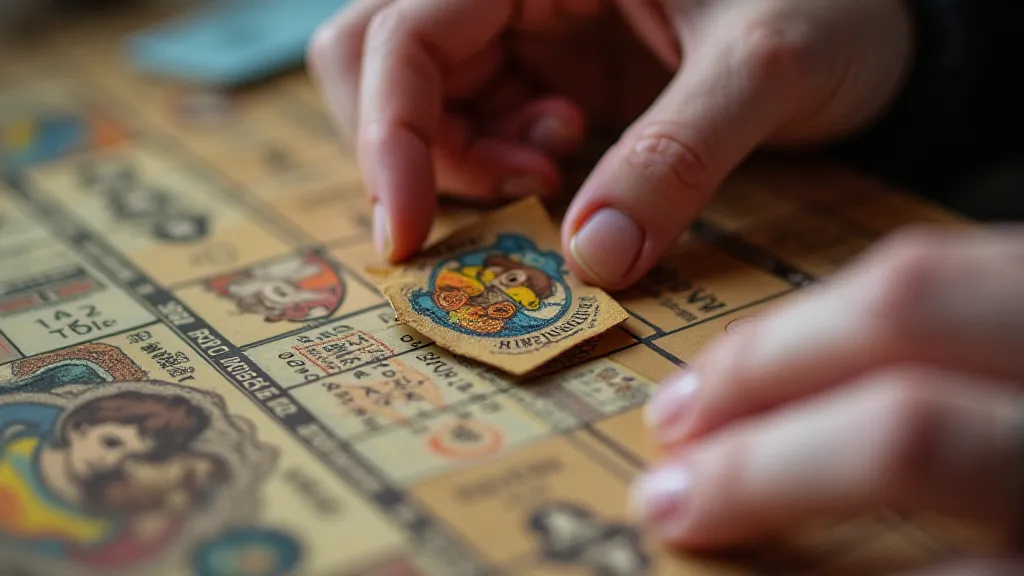The Dream Weaver’s Loom: How Narrative Threads Unravel in Forgotten Games
There's a peculiar melancholy that settles upon you when you encounter a forgotten board game. It's more than just the dust clinging to the box, or the faded artwork hinting at lost vibrancy. It’s the feeling of holding a whispered story, a contained world, that once captivated someone, somewhere, and is now largely unheard. These aren't games vying for shelf space in a brightly lit store; they're relics, fragments of a bygone era of tabletop gaming, and they often possess a narrative depth that modern games, with their sprawling rulebooks and intricate mechanics, can sometimes lack. They are, in essence, a dream weaver’s loom, where threads of imagination were carefully interwoven.
My own fascination with these lost narratives began not with a grand, sweeping epic, but with a humble game called “The Isle of Avalon.” It wasn't a masterpiece by any stretch. The components were basic: a square board, wooden pawns, and a few spinner cards detailing events. Yet, the game’s premise, a desperate struggle for survival on a mysterious island plagued by storms and strange creatures, resonated with me in a way few other games ever had. I found it, tucked away in a box of discarded toys at a flea market. The box itself was unremarkable, worn and scuffed, but the promise of adventure hinted within felt tangible. It was a tiny world, entirely self-contained, yet brimming with possibility.

The Craft of Storytelling in a Simpler Age
The narrative techniques employed in these forgotten games are often surprisingly sophisticated, even if they're presented in a deceptively simple way. Unlike many modern games that rely heavily on cinematic cutscenes or extensive text, these older titles prioritized immersion through gameplay. The story wasn’t *told* to you; it unfolded through your choices and the consequences that followed. The rules *were* the narrative. A seemingly innocuous card draw could trigger a chain of events, shifting alliances and altering your fate.
Consider, for instance, “Mystery Mansion,” a game from the 1970s. Its gameplay involved navigating a haunted manor, collecting clues to uncover a killer's identity. The game lacked a traditional antagonist; instead, the mansion itself was the adversary. The layout of the rooms, the random events triggered by dice rolls, and the subtle hints hidden within the artwork – all contributed to a pervasive atmosphere of dread. The player wasn't just solving a mystery; they were experiencing the fear of being trapped, the paranoia of suspecting everyone around them. This level of subtle, emergent storytelling is something many modern games strive for, but often achieve through more convoluted means. It’s a kind of collaborative storytelling, a shared creation built between player and game. And often, these narratives were crafted and disseminated within vibrant, yet often overlooked, communities of board gamers, a topic explored in detail in "The Guild of Lost Dice: Celebrating the Forgotten Communities of Board Gamers".
This reliance on gameplay to convey narrative also speaks volumes about the expectations of players at the time. Board games weren't just entertainment; they were a communal activity, often played over long evenings with family and friends. The narrative provided a framework for interaction, a shared experience that transcended the simple act of moving pieces around a board. It fostered imagination and encouraged improvisation, allowing players to fill in the gaps in the story with their own creativity. The artistry required to create these evocative experiences wasn't always recognized, especially when so much of the effort went into the visual elements - the illustrations, the box art, the character design. Those who brought these worlds to life, the board game illustrators, were often working behind the scenes, contributing a tremendous amount to the overall charm of the games, as documented in "The Silent Architects: Uncovering the Untold Stories of Board Game Illustrators".
The Echoes of Craftsmanship
Beyond the narrative elements, the physicality of these forgotten games often holds a charm that is largely absent in their modern counterparts. The materials used – thick cardboard, hand-painted wooden pieces, beautifully illustrated cards – all speak to a level of craftsmanship that was once standard, but is now considered a luxury. It’s akin to appreciating the difference between a mass-produced instrument and one lovingly crafted by a skilled artisan. The weight of the pieces in your hand, the texture of the cardboard, the feel of the cards – all contribute to a sense of tactile connection that enhances the overall gaming experience. The scarcity of certain titles, often driven by limited print runs, has only fueled the collector’s obsession with these relics, as explored in further detail in “The Ambered Kingdoms: How Limited Print Runs Created Collector's Obsessions.”
I recall acquiring a copy of “The Lost Expedition,” a cooperative game about a group of explorers traversing a dangerous jungle. The game pieces were remarkably detailed, miniature representations of various jungle creatures and artifacts. They weren’t simply tokens; they were miniature works of art, each possessing its own unique character. Handling them evoked a tangible sense of adventure and transported me to the heart of the jungle, far more effectively than any digital rendering ever could.
The attention to detail often extended to the packaging as well. Many of these games came in beautifully illustrated boxes, often featuring intricate artwork that hinted at the wonders within. These boxes weren't just containers; they were portals to another world, promising hours of imaginative play. These games weren't always the result of a singular genius; quite often, crucial contributions went uncredited, contributing to a historical ambiguity that deserves further examination. Many designers operated in the shadows, their contributions lost to time, a subject investigated in "The Cartographer’s Shadow: Uncovering the Uncredited Game Designers." Sometimes, a game’s initial reception might not reflect its later cult following, revealing a deeper understanding of how design flaws can unexpectedly shape a game’s evolution – a theme considered in “The Rusting Monolith: Deconstructing the Failures and Lessons from Discarded Games”.

The Fragility of Memory and the Joy of Restoration
The unfortunate reality is that these forgotten games are often fragile, both physically and conceptually. Years of neglect, improper storage, and the inevitable passage of time have taken their toll. Many are incomplete, their components lost or damaged. But even in their imperfect state, they retain a powerful allure. There’s something deeply satisfying about rescuing a piece of gaming history from oblivion, restoring it to a semblance of its former glory.
Restoring an old board game isn’t just about replacing missing pieces or repairing damaged components; it’s about preserving a memory, honoring the creativity of the original designers, and ensuring that future generations have the opportunity to experience these unique gaming experiences. While a complete restoration can be challenging—sourcing accurate replacements for missing pieces can be a treasure hunt in itself—the effort is often rewarded with a deeper appreciation for the game’s history and its enduring appeal. It requires patience, a keen eye for detail, and often a touch of ingenuity – qualities frequently employed by collectors themselves.
Similarly, collecting these forgotten games is more than just acquiring objects; it's about curating a collection of memories, preserving a piece of gaming history. It's a way of connecting with the past, appreciating the ingenuity of earlier generations, and celebrating the enduring power of tabletop gaming. The hunt for rare and elusive titles can be exhilarating, but the true reward lies in the discovery of hidden gems—forgotten narratives waiting to be rediscovered. The very act of collecting and restoring these games helps to keep their stories alive, ensuring that the dream weaver's loom continues to resonate for generations to come.

A Legacy of Imagination
The dream weaver’s loom of forgotten board games may be silent now, but its threads continue to resonate. These games offer a valuable reminder of the enduring power of imagination, the importance of craftsmanship, and the joy of shared experiences. They challenge us to reconsider our expectations of tabletop gaming and to appreciate the subtle artistry that can be achieved through simple mechanics and evocative storytelling. By preserving these relics of the past, we ensure that these narratives continue to inspire and entertain. The reasons behind a game’s decline and eventual rediscovery are fascinating, and often reveal just how much our perspectives on entertainment evolve over time—a concept further illuminated by “The Phantom Mechanic: How Unintended Consequences Shaped Board Game Evolution.”





